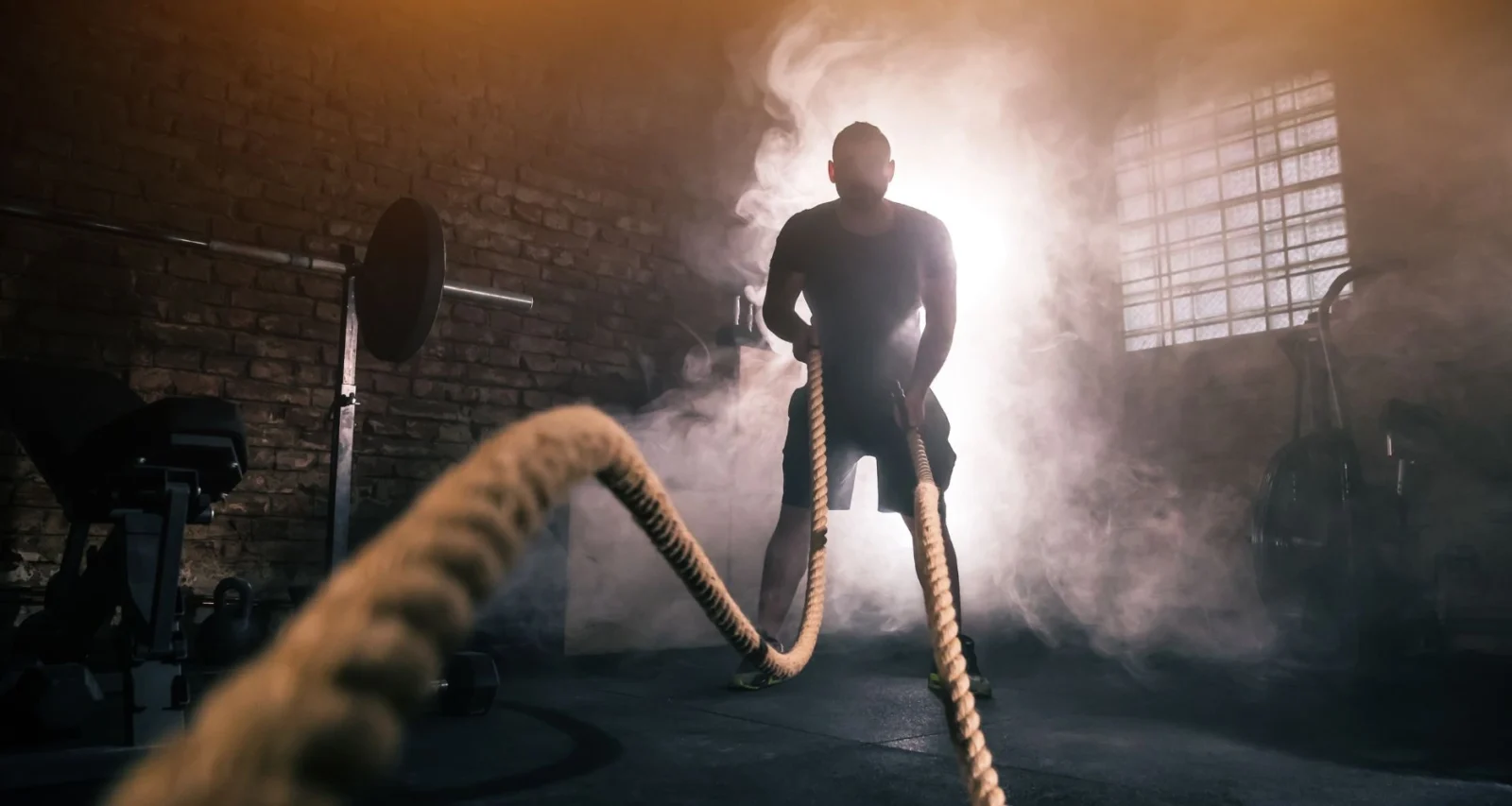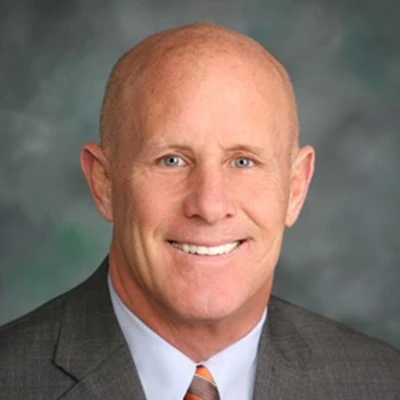How To Harness ‘The Gouge’: Navy SEAL Shares Insights for Fitness Pros

Former US Navy SEAL and Vice Admiral Bob Harward shares his unique philosophy and discusses how fitness trainers can leverage military principles to enhance client success
For Bob Harward, true success is measured not by personal accolades but by the impact one has on others.
This principle is central to his new book, “The Gouge! How to Be Smarter Than the Situation You Are In.” For fitness professionals, Harward’s philosophy offers a powerful framework for enhancing client success and well-being.
As a former U.S. Navy SEAL and Vice Admiral, Harward has lived by the gouge, or information channel, ensuring the success of his teams throughout his decorated military and corporate careers. Now, he’s sharing these insights, which help fitness coaches and trainers leverage the gouge for mutual growth and success.
In an exclusive interview with Athletech News, Harward discusses how fitness professionals can integrate the gouge into their coaching and management styles, highlighting how trainers can create a supportive environment that empowers clients to achieve their goals.
This conversation has been lightly edited for clarity and length.
Athletech News: What’s your fitness philosophy, and how did you get hooked on physical activity?
Bob Harward: Fitness has always been a significant part of my life, almost as important as academics. In fact, it often came easier to me than academics. When I went to college, it played an even bigger role. The Naval Academy was particularly challenging for me, and fitness provided a crucial outlet. It offered camaraderie and an escape from the strict order and discipline.
At the academy, I played football in my first year, and when the season ended, I felt lost. Being on a varsity team allowed certain privileges, like avoiding formation and having different meal options. Without football, I needed something else, so I decided to try rowing. I approached the coach and, despite being in the off-season, he welcomed me to join the team. I ended up rowing all four years.
Rowing was one of the most demanding sports I participated in. It required immense upper body strength with exercises like pull-ups and push-ups, as well as significant running, including timed 10-mile runs and stadium stairs. This rigorous physical training paid off immensely throughout my career as a Navy SEAL. I always felt I could out-run, out-swim, and out-perform anyone, driven by a competitive nature that shaped my leadership philosophy.

ATN: Why did you write the book? Can you explain what “the Gouge” means in military terms and how you’ve adapted this principle to be applicable in everyday fitness leadership and client relationships?
BH: I was fortunate to adopt a philosophy from my father, who served in World War 2. Because of the rapid production of ships for the war effort, many crews had only rudimentary training. Experienced sailors focused on building each other’s skills to prepare for the dangers they faced, such as kamikaze attacks. This mutual training was essential for their survival and success.
This concept evolved into what we call “the Gouge.” It’s the critical information you need to succeed, coming from someone who wants the best for you because it benefits everyone. Throughout my 40-year military career, I held 26 different jobs. I often relied on people with more experience to help me succeed, and I focused on supporting them professionally and personally. This proactive teamwork ensured our collective success.
I wrote the book to highlight the importance of this principle, especially in today’s confrontational environment. The goal isn’t just to win conflicts but to improve the collective group and individuals involved. This philosophy is essential in business and any organization. It’s about balancing the mission’s success with the well-being of the team.

credit: Post Hill Press
ATN: Can you share a story from your book that demonstrates how “the Gouge” can be used to improve health and wellness programs or community fitness initiatives?
BH: One powerful story comes from our mission during the invasion of Iraq. One of our primary tasks was to secure the oil infrastructure. Initially, this wasn’t a major consideration in the strategic planning, but our staff, recalling the destruction Saddam Hussein caused in the first Gulf War, saw the potential threat to the oil facilities in the North Arabian Gulf. There was intelligence suggesting that Iraq might destroy their oil infrastructure, leading to catastrophic environmental damage.
After months of training, we were given 48 hours to execute the mission. The team was prepared, but just before execution, the young officer leading the assault came to me, expressing his fear of being shot down. I reassured him, based on our intelligence, that the risk was manageable, but I told him to discuss it with his team. He returned, still concerned but willing to proceed. After he left, I was overwhelmed with anxiety, fearing for their lives.
What made this particularly emotional was that this young officer had been involved in the Panama invasion years earlier. He had survived a traumatic experience where he and his wife were detained and tortured by Noreiga’s Commendancia. His resilience and commitment, built through a culture of proactive support and trust, exemplified the principles of “the Gouge.”
This culture of mutual support and proactive leadership enabled him and his team to make critical decisions with confidence. They trusted their leadership and each other, which is vital for any organization. This trust and confidence can significantly contribute to the success of health and wellness programs or community fitness initiatives. It’s about creating an environment where people feel supported, valued and confident in their roles.
ATN: What advice would you give to fitness trainers and managers who are looking to integrate aspects of your book into their coaching or management styles?
BH: My advice for fitness trainers and managers is to be proactive in taking care of their clients and athletes. It’s essential to look beyond just performance and consider their overall well-being. Focus on the overall development and well-being of your athletes or clients, considering what happens to them beyond their immediate goals.
Here are three key components to integrate into your coaching or management style:
Make it fun: Ensure that the training or coaching experience is enjoyable. It’s important to have a good time, even though there might be challenges and hard work involved. Tools like the TRX suspension system are invaluable. They are versatile, easy to use, and can be taken anywhere, making them accessible for all ages and fitness levels.
Learn from the experience: Every session should be a learning opportunity. Whether you’re working out with someone or coaching them, there’s always something to learn and apply to your toolkit.
Invest in yourself: Emphasize the importance of investing in oneself. Physical workouts are not just about physical well-being but also about mental health. Encourage your clients or athletes to see every workout as a deposit in their most important bank account—themselves.
Coaches, trainers and managers need to embrace the philosophy of holistic development. It’s about making a commitment to help individuals grow and prosper in all aspects of their lives. This profession offers the privilege of influencing the future and making a positive impact on people’s lives. While it can be challenging and may not always pay well, the satisfaction and fun derived from helping others make it worthwhile.



